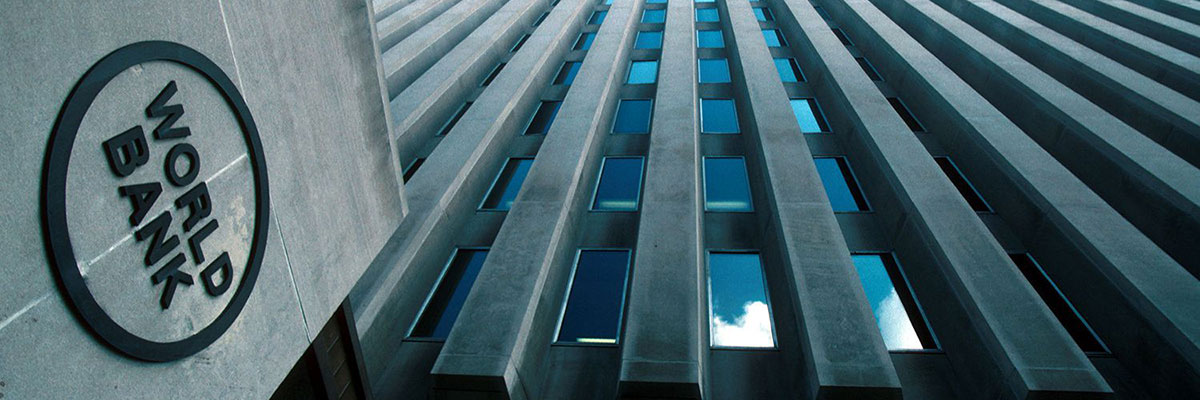
Anew report released by World Bank expects Iran’s economy to grow 3.7% in 2022.
“Output in the Islamic Republic of Iran is expected to grow by 3.7% in 2022, boosted by the waning of the pandemic and higher oil prices. Growth is expected to slow subsequently, however, as unresolved structural challenges and feeble fixed investment limit the country’s growth potential,” reads part of the group’s flagship World Economic Prospects report published for June.
Forecasts for 2023 and 2024 have been put at 2.7% and 2.3% respectively. According to the World Bank, Iran’s GDP growth stood at -6.8%, 3.4% and 4.1% in 2019, 2020 and 2021 respectively. “Just over two years after Covid-19 caused the deepest global recession since World War II, the world economy is again in danger. This time it is facing high inflation and slow growth at the same time. Even if a global recession is averted, the pain of stagflation could persist for several years, unless major supply increases are set in motion,” report said.
“Amid the war in Ukraine, surging inflation and rising interest rates, global economic growth is expected to slump in 2022. Several years of above-average inflation and below-average growth are now likely, with potentially destabilizing consequences for low- and middle-income economies. It’s a phenomenon — stagflation — that the world has not seen since the 1970s.”
The World Bank’s forecasts reflect a sizable downgrade to the outlook, as global growth is expected to slow sharply from 5.7% in 2021 to 2.9% this year, which also reflects a nearly one-third cut to its January 2022 forecast for this year of 4.1%.
It noted that the surge in energy and food prices, along with the supply and trade disruptions triggered by the war in Ukraine and the necessary interest rate normalization now underway, account for most of the downgrade.
“Covid-19 already dealt a major setback to income growth and poverty reduction in developing economies. The fallout from the war in Ukraine compounds the challenges for many of them. They are expected to grow 3.4% in 2022, barely half the rate in 2021 and well below the average from 2011 through 2019. Middle-income countries will see a sharp downgrade to growth in 2022, losing 1.3 percentage points relative to the January forecast,” the report said.
“Because of the adverse shocks of the past two years, real income per capita in 2023 will remain below pre-Covid-19 levels in about 40% of developing economies. For many countries, recession will be hard to avoid. With the supply of natural gas constrained, especially for use in fertilizer and electricity grids in poorer countries, announcements of major production increases worldwide will be essential for breaking out of stagflation and restoring noninflationary growth.”
IMF Forecasts 3% Growth in 2022
The International Monetary Fund is expecting Iran’s economy to grow by 3% in 2022.
In its new World Economic Outlook report titled “War Sets Back Global Recovery”, IMF say the economy expanded by 4% in 2021. Predictions for 2023 and 2027 are at 2%.
IMF has put Iran’s 2014-20 GDP growth at 5%, -1.4%, 8.8%, 2.8%, -2.3%, -1.3% and 1.8% respectively with 2004-13 average at 2.5%.
“Global economic prospects have worsened significantly since out last World Economic Outlook forecast in January. At the time, we had projected the global recovery to strengthen from the second quarter of this year after a short-lived impact of the Omicron variant. Since then, the outlook has deteriorated, largely because of Russia’s invasion of Ukraine — causing a tragic humanitarian crisis in Eastern Europe — and the sanctions aimed at pressuring Russia to end hostilities,” reads the report’s preface.
“Beyond the immediate humanitarian impacts, the war will severely set back the global recovery, slowing growth and increasing inflation even further. This report projects global growth at 3.6% in 2022 and 2023, 0.8 and 0.2 percentage points lower than in the January forecast, respectively. The downgrade largely reflects the war’s direct impacts on Russia and Ukraine, and global spillovers.”
The growth forecast for Iran in 2022 is higher compared to IMF’s previous estimate.
The “Recovery During a Pandemic” report had forecast the GDP growth to decline slightly to 2% in 2022 from 2.5% in 2021 (the latter has also been revised up).
Domestic Reports
The Central Bank of Iran’s latest report on the country’s GDP says the economy grew by 4.1% in Q1-3 of last fiscal year (March 21-Dec. 21, 2021) compared with the preceding year’s corresponding period.
According to CBI, the GDP growth stood at 3.4% without taking into account crude oil production during the period under review.
Oil saw the biggest growth of 11.7% among main economic sectors surveyed by the bank.
The CBI data further show “services” expanded by 6.5%, “industries and mines” registered zero growth and “agriculture” contracted by 2.1%.
The central bank’s report came shortly after the Statistical Center of Iran said the economy grew by 5.1% during the same period (Q1-3), adding that without taking into account the growth in the oil sector, the GDP grew by 3.8%.
According to SCI, “agriculture” contracted by 3.9%, “industries and mines” grew by 7.1%, and “services” expanded by 5.1%. The subsectors of “industries and mines”, namely “crude oil and natural gas extraction”, “other mines”, “industry”, “energy” and “construction”, saw a 13.4%, -2.5%, 3.4%, 5.1% and 6.3% growth.
According to CBI, Iran’s gross domestic product in the fiscal 2020-21 saw 3.6% growth. Economic growth, excluding oil, expanded by 2.5%.
According to SCI, the year’s GDP expanded by 0.7% compared with the year before.
Economic growth, excluding oil, was near zero, SCI reported.
Discrepancies were also seen in SCI and CBI reports on Iran’s economic growth in the fiscal 2019-20.
According to SCI, the Iranian economy experienced a -7% contraction in the fiscal 2019-20.
According to the center, GDP shrank by -0.6% without taking oil production into account. This is while CBI put fiscal 2019-20 growth at -6.5%. Excluding the oil sector, growth was put at 1.1%.
Iran’s gross domestic product shrank by 4.9% in the fiscal 2018-19 compared to the year before, according to SCI. The center put that year’s growth, excluding oil production, at -2.4%.
CBI did not release any report on the fiscal 2018-19 economic growth.
Iran’s economy emerged from two years of recession in the fiscal 2014-15 with a 3% growth; the economy had contracted by 5.8% and 1.9% back to back, according to the Central Bank of Iran.
Growth in 2015-16 has been put at -1.6% by CBI and 0.9% by SCI. CBI has put 2016-17 growth at 12.5% while SCI says it was much lower and near 8.3%.
You can see the report here.
 Login
Login